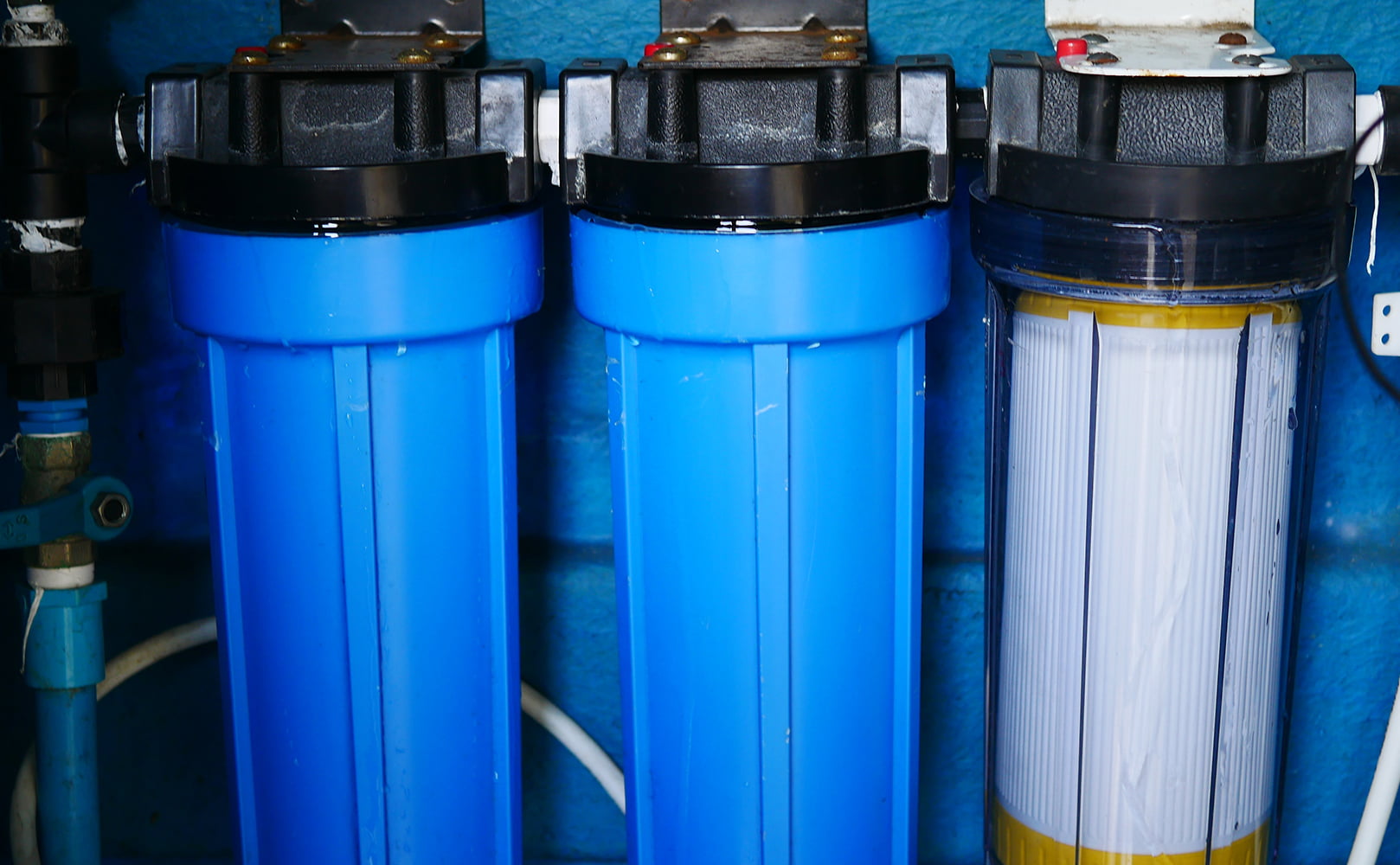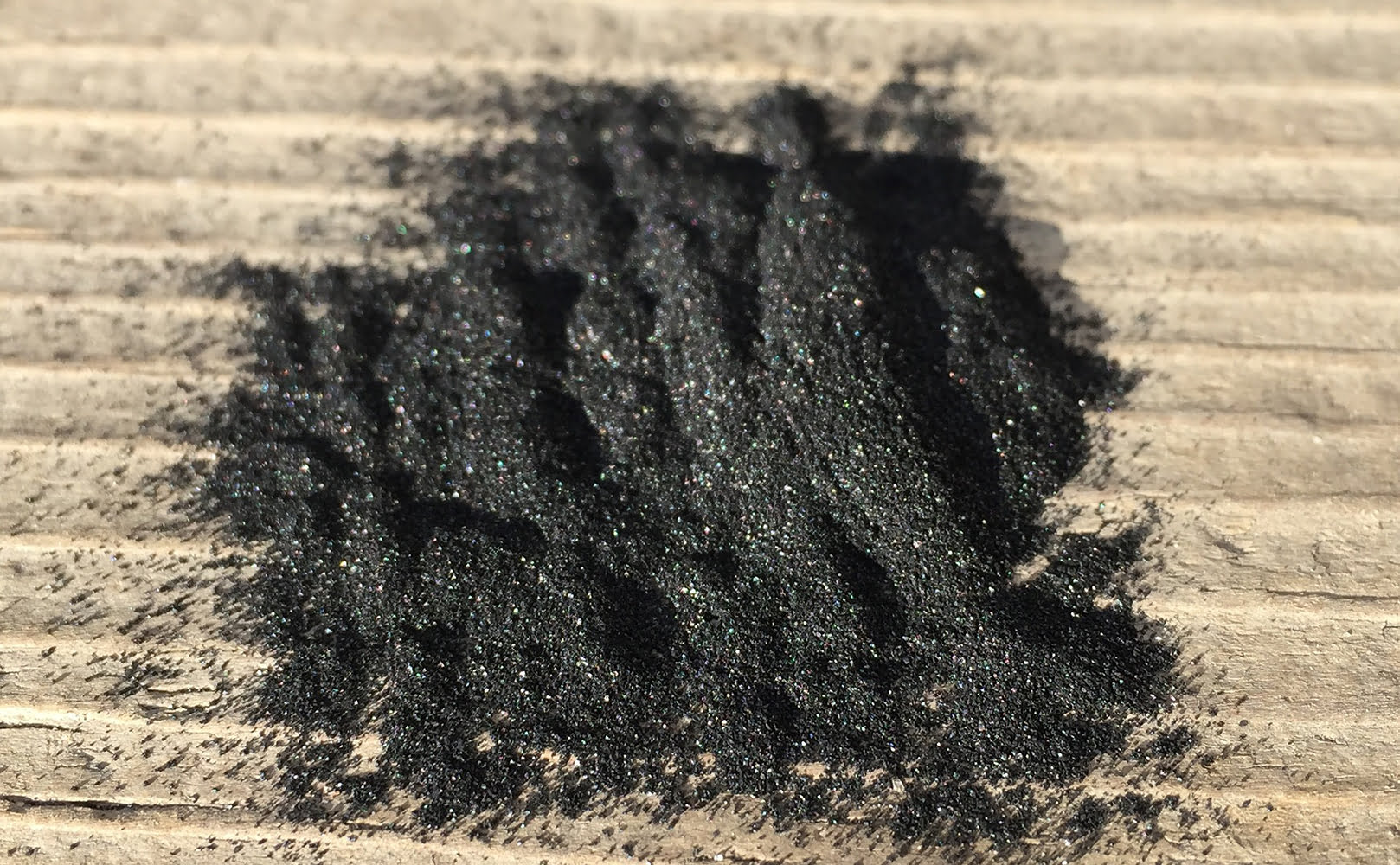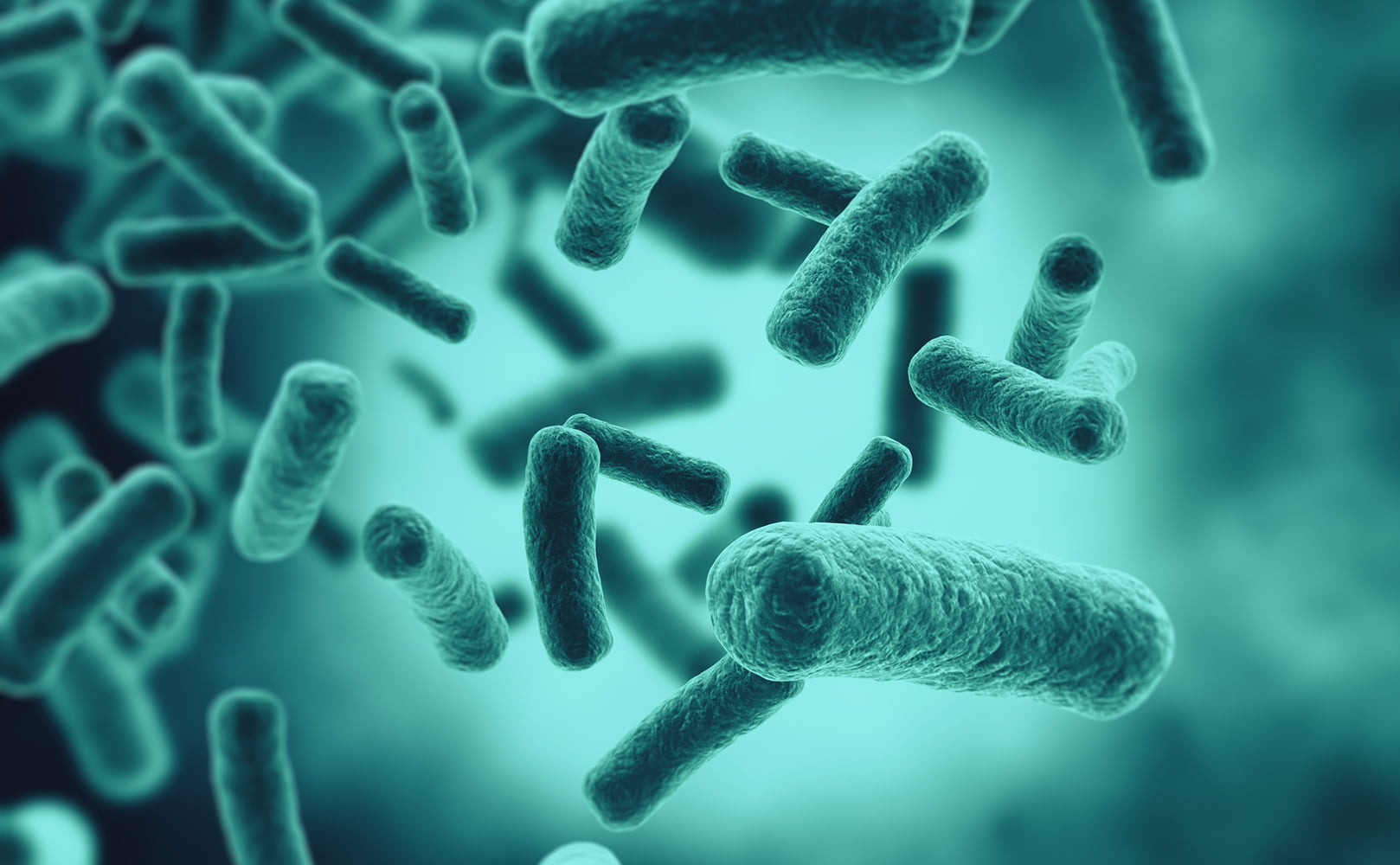What Is a Water Filtration System? How Do Whole House Water Filters Work?
Written by: Gene Fitzgerald // Last Updated: Jan 4, 2023
This page may contain affiliate links. If you buy a product or service through such a link we earn a commission at no extra cost to you. Learn more.
Are you looking for better quality water that tastes and smells like H20 and not like chemicals? Or is water around your house laden with impurities sending your plumbing, fixtures, crockery, clothes, and family in distress? If your answer is affirmative, it’s time to look for a whole house water filtration system.
Not sure if that’s a good idea? Let’s take you along as we explore what a whole house water filter is and how these systems work, plus which type will be the best fit for your household. Ready?
Key Takeaways
- A whole house water filter is a type of water filtration system installed close to the point where the main water line enters your home.
- It ensures that each water outlet and water-based appliance receives filtered water.
- Depending on their filtration process, whole house water filters are designed to remove different impurities or contaminants such as sediment, chlorine, iron, sulfur, microorganisms, or pesticides.
What Is a Whole House Water Filter?
A whole house water filter is a filtration system installed at the point where the main water line enters your home. It ensures that each outlet and water-based appliance in your house receives clean water.
Various types of whole house filtration systems are designed to remove different impurities, including sediment, chlorine, iron, sulfur, microorganisms, pesticides, etc.
If you are struggling with water that is unsuitable for usage, a whole house water filter is an answer to your woes.
How Does a Whole House Water Filter Work?
Whole house water filters work by removing, rejecting, blocking, trapping, adsorbing or absorbing unwanted contaminants from your water supply. For example, if there are obvious traces of sediment in your water that float in your water bottles or choke your appliances, a simple sediment filter might do the trick.
In contrast, if your water is giving out a rotten egg-like smell, you need a complex filtration system designed to remove that specific contaminant.
With that said, many state-of-the-art whole house water filtration systems employ 2 or more filter stages, each designed to bring your water to its purest form. Mixed media systems go a long way in ensuring your family’s health and elongating the life of your water heater, dishwasher, and washing machine.
Here is how each stage works. Keep in mind that every step is crucial in bringing you closer to pure water.
Pre-Filtration
As the name suggests, a pre-filter removes unwanted matter from the water before the primary filter can work its magic. When water is passed through a pre-filter, it’s usually to block sand, silt, rust, sediment and other larger pollutants.
Not only does pre-filtration make water cleaner, but it also reduces the chances of buildup in subsequent filters. As a result, the performance and durability of the primary filters improve drastically.
Without a functioning pre-filter, your main filters will be clogged soon which might result in premature failure of the entire unit.
Therefore, effective contaminant removal relies heavily on the pre-treatment of raw water. Keep in mind, some advanced whole house water filter systems use more than one layer of pre-filter to clean water thoroughly.
Main Treatment Stage
The second stage of treatment is where the actual filtration takes place. Depending on the contamination of your water supply, you can choose any of the following filters:
- Sediment filters
- Carbon-based filters
- KDF systems
- Specialized whole house water filters
- Whole house reverse osmosis systems
- Ultraviolet light filters
- (Water softeners)
We shall discuss each of these filtration systems in detail below. At this point, all you need to know is that no matter what issues you are facing with your water supply, there is a whole house filter to the rescue.
Post-Filtration
The post-filtration stage is the smallest part of the process but packs a punch. It adds a finishing touch to your water, often removing any traces of sediment or organic matter. In addition, the post-filtration stage essentially improves the aesthetics of water by eliminating smells, taste, and texture.
The three stages of filtration – pre-filtration, main treatment, post-filtration – give you enough peace of mind that the water you drink and bathe in is free of harmful contaminants. Depending on the model you select, whole house water filters may last from several months to more than a decade.
What Are the Different Types of Whole House Water Filters and What Do They Remove?
As mentioned above, whole house water filters are designed to remove different contaminants. Some remove big particles, while others focus on microscopic bacteria and viruses. Yet another type excels in reducing chemicals.
The right system for your house will be determined by a thorough analysis of the composition of your water supply, and of course, your budget.
Now, how would you know exactly what is in your water? Either you can request a water analysis report from your municipal board (although that might not give you a complete picture), use a home water testing kit, or a laboratory test.
If you are using water from a private well, you are supposed to test it annually for changes in composition and general cleanliness.
Once you know what you are dealing with, make the right choice.
Sediment Filters
A sediment filter works like a sieve to remove dirt, flecks of rust, debris, and overall large particles from water. It traps and removes unwanted contaminants that can clog your pipelines, damage appliances, and result in low water pressure.
In dire cases, you might notice turbid and cloudy water, which signifies a high content of suspended solids.
Whole house sediment filters are measured in micron sizes which reflect the pore size of the filter. Micron sizes can range between 0.5 to 50 and higher.
Most sediment filters need to be replaced every 3 to 6 months, depending on the water quality.
Carbon-Based Whole House Water Filters
The most common and economical solution to your water issues is the activated carbon filter. It effectively removes chlorine and the byproducts (DBPs) associated with chlorinated water. Chloramines are partially removed.
Activated carbon is, in fact, the only filter media recommended by the EPA to remove
- 32 organic contaminants
- 14 pesticides
- 12 herbicides
How Does It Work?
Activated carbon whole house water filters contain a highly porous bed that holds pieces of carbon, either in granular or block form. As water passes through the filter media, chemicals and similar pollutants are captured and adsorbed, and only pure water manages to pass the other side.
Catalytic Carbon
Most water utilities in the USA are now using chloramines for disinfection since it’s more stable and does not react with organic matter. However, removing chloramines is far more complicated than chlorine. This is where catalytic carbon comes into the picture. A catalytic carbon filter acts as a catalyst to convert chloramines to innocuous chloride in water.
KDF System
KDF (Kinetic Degradation Fluxion) is a popular filter media that can remove:
- Up to 95% chlorine
- Lead
- Nickel
- Iron
- Hydrogen sulfide
- Other heavy metals
However, a KDF system is more complicated to maintain and extremely heavy. Therefore, KDF media is mainly used as an additional filter layer in many whole house water filtration systems.
How Does It Work?
KDF uses high-purity copper and zinc granules to remove a more diverse group of contaminants.
In simple words, it exchanges electrons with contaminants, rendering them harmless.
There are two major versions of KDF:
- KDF-55: For treatment of city water
- KDF-85: For treatment of well water
Both work by using oxidation/reduction (redox) reactions. The process results in:
- Changing chlorine to chloride (NOTE: does not work on chloramines)
- Changing soluble iron into ferric oxide (later removed by backwashing)
- Changing hydrogen sulfide to insoluble copper sulfide (later removed by backwashing)
- Removal of scale
- Controlling bacteria, fungi, and algae
- Copper, lead, and mercury bond to the media
Specialized Whole House Water Filters
Specialized whole house water filters are designed to target heavy contamination of a particular pollutant.
For example, if your water supply has no other issues except for high iron levels, buying an iron filter will be your best bet. If you’re dealing with sulfur, get a sulfur water filter. There exists even a whole house water filter system specialized at lead removal.
All these filter types work on different principles. And it would go far beyond the scope of this article to discuss them all.
Whole House RO Water Filters
Whole house RO systems offer the most comprehensive filtration of all types. It forces water through a thin semi-permeable membrane that rejects the majority of water contaminants, including heavy metals, salts, metalloids, and microorganisms.
As a result, your water is not only safe for drinking but for cooking, cleaning and showering. The downside? RO water purification is not eco-friendly at all and wastes water during the process. These systems also filter essential minerals from the water needed by your body.
Ultraviolet Systems
Ultraviolet systems use UV light to eliminate bacteria, viruses, parasites, fungi, and algae from water. They use no chemicals and thus are a safe and effective way to purify your water.
But does UV light treatment remove other major contaminants or sediment? Not really. Therefore, a UV light filter is used as an addition to other layers in a whole house filter system. It could also be used if your only concern is the removal of pathogens.
By the way, UV light damages the DNA of living organisms, leaving them unable to reproduce and cause harm.
(Water Softeners)
Strictly speaking, water softeners are not a form of whole house water filters. The difference is, they don’t filter out anything; they are “purifiers.” They target the most common issue related to water quality in the USA: Hard water.
If you are tired of scale buildup, white deposits on your fixtures, and constant repairs to your appliances, chances are, your water has a high concentration of calcium or magnesium.
How Does It Work?
Water softeners use ion-exchange technology that replaces positively charged hardness minerals with positively charged sodium in the resin media. As a result, magnesium, calcium, and even iron get stuck to the resin bed while soft water flows out of the unit.
More Whole House Water Filter Benefits
Whole house water filters are unrivaled when it comes to complete protection for your family, appliances, and plumbing.
Pure water is essential for drinking, but you need it all around your house, whether for cooking, cleaning, showering, or washing dishes and clothes.
You will be shocked to know that chemicals and disinfectants in your water supply become airborne when heated in your shower, bath, dishwasher, and laundry. Inhaling these chemicals poses a far more severe threat to your health than ingesting them orally.
In short, using a whole house water filter you will see an improvement in your indoor air quality. Better water and better air equals better health.
Not only does a unit give you peace of mind, but it also provides clean and irritant-free water protecting your skin, hair, and body.
Do You Need a Whole House Water Filter?
Do you even need a whole house water filter?
There is no wrong answer to this question. Whole house water filters address the unique problems with your water supply and help minimize water damage. But it’s not obviously the only option or the best one either.
In some cases, you might need a separate under-the-sink water filtration system to address specific drinking water concerns. Some whole house filters reduce water pressure around the house, while other models take up too much space.
The only way to be entirely sure is to get a water test, go through honest consumer reviews and make the best choice according to your budget.
If you have any questions about what whole house water filters are and how they work, please don’t hesitate to leave a comment below!
Information provided on BOS is for educational purposes only. The products and services we review may not be right for your individual circumstances.
We adhere to strict editorial guidelines. Rest assured, the opinions expressed have not been provided, reviewed, or otherwise endorsed by our partners – they are unbiased, independent, and the author’s alone. Our licensed experts fact-check all content for accuracy. It is accurate as of the date posted and to the best of our knowledge.




